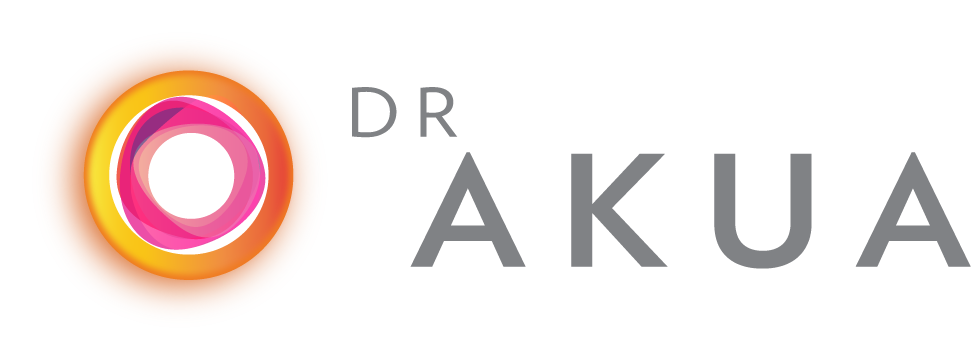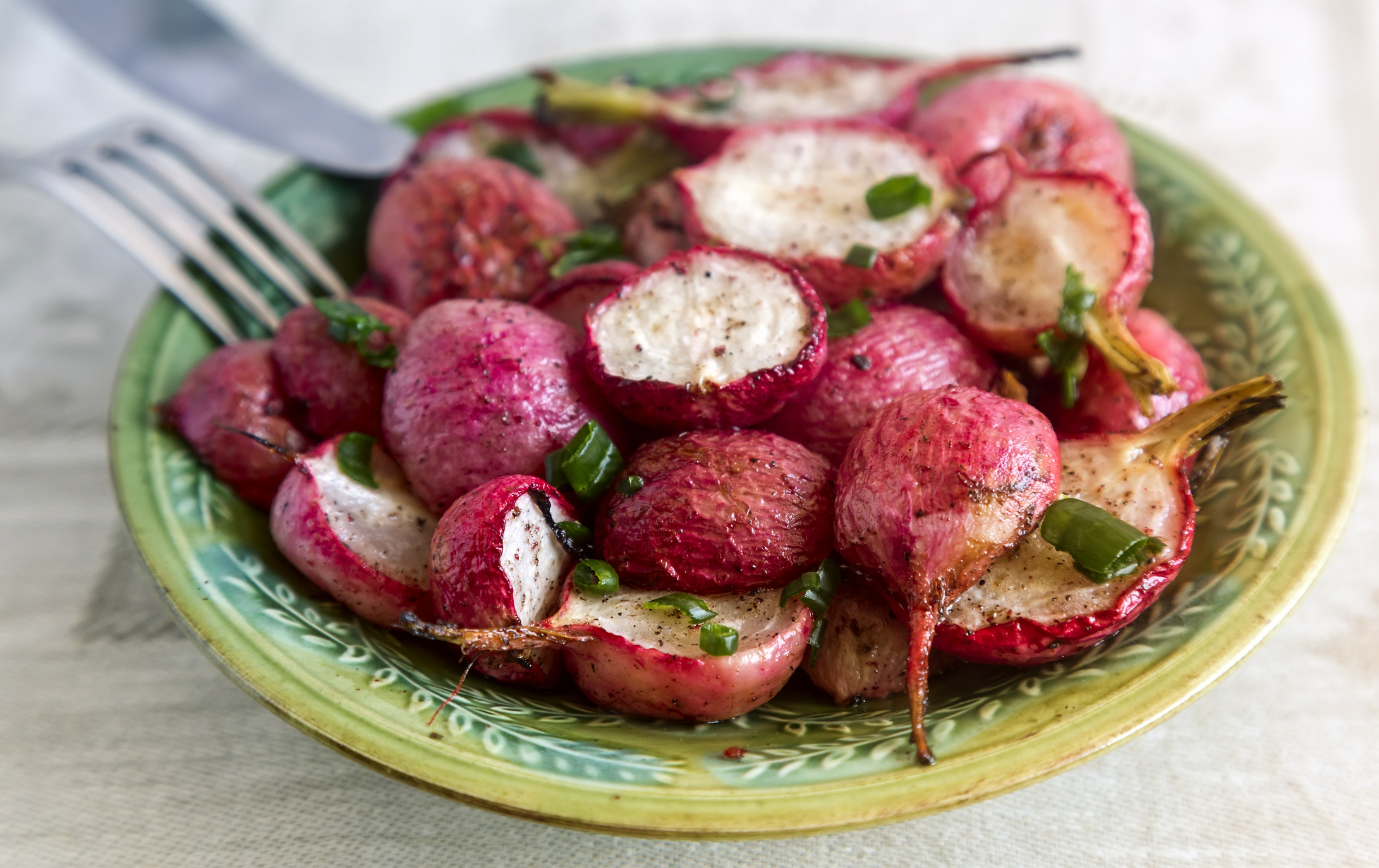In The Rainbow Explained, I provided a quick overview of the nutritional benefits of different colored fruits, vegetables, and legumes. Now it’s time to dig a little deeper into each color of the natural food rainbow!
In this article, I’ll focus on the incredible powers of red fruits, vegetables, and legumes. Let’s dive into the treasure trove of healing, nourishing, and detoxifying nutrients that exist in whole, plant-based red-hued foods.
A deeper dive into red fruits, vegetables, and legumes
Red foods can help fight cancer, heart disease, stroke, and diabetes. For men, tomatoes, watermelon, and strawberries may help reverse the progression of prostate cancer and protect against erectile dysfunction.
Red fruits include apples, acai berries, blood oranges, cranberries, cherries, goji berries, guavas, grapes, plums, pomegranates, raspberries, strawberries, watermelon, and tomatoes.
Red vegetables include rhubarb, red bell peppers, beets, red onions, red potatoes, radicchio, and radishes.
Red legumes include adzuki beans, kidney beans, and red lentils.
The healthy nutrients and elements in red fruits, vegetables, and legumes
Vitamin A (Carotenoids): Carotenoids are plant compounds that can convert to vitamin A in the body. Vitamin A has many functions, such as promoting healthy vision and supporting the immune and inflammatory systems, cell growth, reproduction, and bone health. Red bell peppers, tomatoes, and watermelon are great sources of carotenoids.
Vitamin C: Vitamin C is a huge immunity booster and an antioxidant that helps our bodies fight against free radicals that can damage our cells, organs, and tissues. It has been linked to protection against cancer, heart disease, and other ailments. Vitamin C plays an important role in the natural healing process, and it is a building block for your blood vessels, bones, cartilage, and muscles. Beets, cherries, guavas, pomegranates, red bell peppers, strawberries, and tomatoes are all packed with Vitamin C.
Vitamin E: Vitamin E is a powerful antioxidant that protects our cells, organs, and tissues from free radicals. It also plays an important role in cardiovascular health, healthy vision, healthy skin, the reproductive system, cellular health, and immunity. Vitamin E is a building block for red blood vessels and acts as a blood thinner, which can reduce clotting. Vitamin E is fat-soluble, so it’s best to consume Vitamin E foods with a bit of healthy fat for optimal absorption. Red bell peppers, cranberries, and raspberries are all good sources of Vitamin E.
Vitamin K: Vitamin K is needed for healthy bones, and it is also a vital component in creating the blood clots that help wounds heal. Because Vitamin K is fat-soluble, it is best to consume Vitamin K-rich foods with a bit of healthy fat for optimal absorption. Adzuki beans, kidney beans, grapes, pomegranates, and kidney beans are good sources of Vitamin K.
Lycopene: Lycopene is a phytonutrient/antioxidant that fights against damage caused by free radicals in the body, promotes cellular health, and has been linked to a reduced risk of heart disease and some forms of cancer. Studies suggest it may protect against cancers of the prostate, breast, and skin, and reduce the risk of heart attacks. Watermelon, red bell peppers, red cabbage, pink grapefruit, guavas, tomatoes, and tomato-based products such as spaghetti sauce, tomato soup, and tomato paste are great sources of lycopene.
Anthocyanins: Anthocyanins are phytonutrients/antioxidants that have been linked to reduced risk of cancer, protection against cardiovascular disease, and increased cognitive function. Raspberries, sweet cherries, strawberries, blood oranges, cranberries, red apples (with skin), beets, red cabbage, red onions, red lentils, and kidney beans are good sources of anthocyanins.
Ellagic acid: Ellagic acid is an organic compound/antioxidant that has been linked to improved liver function, cellular health, and anti-inflammatory properties. Pomegranates, red raspberries, strawberries, and cherries all help your body produce ellagic acid.
Fisetin: Fisetin is a flavonoid, a chemical compound found in plants that provides antioxidant, anti-cancer, anti-aging, and anti-inflammatory effects. Strawberries are very fisetin-rich, and grapes, apples, tomatoes, and red wine are good sources of fisetin.
Quercetin: Quercetin is a flavonoid with antioxidant effects, and it has been linked to protection against cancer, reduced risk of heart disease and high blood pressure, and anti-inflammatory benefits. Red onions are very high in quercetin, and cherries, grapes, apples, and red wine are also good sources of quercetin.
Citrulline: Citrulline is a phytonutrient that helps improve blood flow in the body, and citrulline is used to treat sickle-cell anemia and mild to moderate erectile dysfunction. Watermelon is a wonderful source of citrulline.
Folate: Folate, also known as vitamin B-9 or folic acid, is an important building block for red blood cells and cellular health. Beets, pomegranates, radishes, red lentils, kidney beans, and adzuki beans are good sources of folate.
Complex carbohydrates: Complex carbs are “good carbs.” They’re more nutrient-dense and fiber-rich than simple carbs such as sugars. In fact, complex carbs help regulate blood sugar, which makes them an ideal option for anyone struggling with diabetes. Red potatoes, red lentils, kidney beans, and adzuki beans are complex carbohydrates.
Fiber: Fiber provides a wealth of benefits to your well-being: It famously promotes gastrointestinal health (i.e. “keeps you regular”). It also helps regulate blood sugar, lower cholesterol levels, prevent heart disease, and reduce intestinal inflammation. Adzuki beans, apples (with the skin), beets, kidney beans, pomegranates, raspberries, red lentils, red potatoes, rhubarb, and strawberries are packed with fiber.
Calcium: Calcium is most commonly associated with stronger bones and teeth, but it also has many more healthy benefits for your body. It plays an important role in cardiovascular health, the movement of your muscles, your hormonal responses, and your nervous system. Vitamin D helps your body absorb calcium in the most efficient way, so it’s best to pair calcium-rich foods with foods rich in vitamin D, such as mushrooms, egg yolks, and salmon. Rhubarb, red lentils, kidney beans, and adzuki beans are good sources of calcium.
Iron: Iron is synonymous with strength — both inside and outside the body. Your body uses it to create hemoglobin, which delivers oxygenated blood from your lungs to the rest of your body. Iron can increase your energy levels, strengthen your muscles, boost your physical performance, increase brain function, and improve your immune system. The iron found in plants is non-heme iron, which is best absorbed when combined with vitamin C. Most plant foods that contain iron also contain vitamin C, but it doesn’t hurt to add vitamin C-rich foods such as tomatoes, bell peppers, berries, citrus, or greens to aid absorption. Adzuki beans, beets, red lentils, kidney beans, adzuki beans, and red potatoes are all good sources of iron.
Potassium: Potassium is a mineral that helps optimize your heart health, and it also acts as an electrolyte that regulates your blood pressure and strengthens your muscles. Most people think about bananas when they think about potassium, but there are many red foods that are potassium-rich. Guavas, kidney beans, red lentils, red potatoes, and tomatoes/tomato juice are high in potassium.
Zinc: Zinc is a mineral that is a building block for healthy DNA. It also helps your metabolism and digestive system, and it’s essential to your cellular health, your immune system, and your nervous system. Adzuki beans, kidney beans, red lentils, and red potatoes are good sources of zinc.
Magnesium: Magnesium is an element that plays an important role in hundreds of chemical reactions throughout your nervous system, cardiovascular system, immune system, and muscular system. Adzuki beans, apples, kidney beans, red lentils, and red potatoes (with the skin) are good sources of magnesium.
Catechins: Catechins are phytochemicals with powerful antioxidant properties, and they’ve been linked to a lower risk of heart disease and the ability to fight against several forms of cancer. Apples (with the skin), cherries, grapes, guavas, raspberries, strawberries, and red wine are good sources of catechins.
Glucosinolates: Glucosinolates provide the liver with what it needs to get rid of toxins, and they are also helpful for your intestinal health. Studies have found that they may also help fight against some forms of cancer, especially estrogen-related cancers such as breast and uterine cancer. Glucosinolates contain sulfur, which means that most funky-smelling vegetables are good sources of these powerful compounds. Radishes, red cabbage, and rutabaga are great sources of glucosinolates.
Manganese: Manganese is a mineral with antioxidant properties that plays an important role in the health of your brain, your bones, your reproductive system, and your nervous system. Manganese is a building block for connective tissue and blood clots, and it also helps regulate blood sugar and optimize your metabolism. Adzuki beans, grapes, kidney beans, pomegranates, red lentils, and red potatoes (with the skin) are good sources of manganese.
Resveratrol: Resveratrol is a phytonutrient that promotes healthy aging processes by reducing inflammation and blood sugar. It is also beneficial for the cardiovascular system. Cranberries, grapes, and red wine are good sources of resveratrol.
Special tips for getting the most nutrition out of red fruits, vegetables, and legumes
Smash and cook those tomatoes! Cooked tomatoes are even healthier than raw tomatoes. That’s because cooking tomatoes makes the structure of the lycopene molecule even more usable by the human body. Smashed tomatoes, like the ones you’d eat in salsa, sauces, and tomato paste, also help increase lycopene absorption by the body.
Add healthy fats to cooked tomatoes for maximum absorption: Lycopene is fat-soluble and requires fat for optimal absorption. One way to obtain this healthful combination is to add olive oil to a cooked tomato sauce. But don’t go overboard on the oil: Healthy fats are still fats, and fats are high in calories. Even oils that are widely considered “healthier,” such as olive oil, contain 120 calories per tablespoon. In excess, all fats can cause damage to our veins and arteries.
Beware of some nutritional supplements: Getting your phytonutrients from whole foods is best. In fact, taking phytonutrients such as lycopene and carotene in supplement form may actually increase the risk of cancer, whereas consuming these phytonutrients in whole-food form, like cooked tomatoes, has been linked to a decrease in the risk of cancer.
Be open to beans for breakfast! While you may not think of them as “breakfast foods,” kidney beans, adzuki beans, and other types of beans are among the healthiest breakfast foods on earth. They will help regulate your blood sugar all day, which makes them an ideal option for anyone struggling with diabetes. They help lower the risk of heart disease. They help keep your weight and your cholesterol in check. They’re often higher in antioxidants than berries – especially deep, dark beans like red kidney beans – and they’re cheaper too. Furthermore, beans are also ideal for sustaining your energy throughout the day and helping you feel full – an important part of keeping unhealthy cravings at bay.
Explore the other colors of the food rainbow
By consuming every color in the natural food rainbow, you will be flooding your body, systems, organs, cells, and DNA with so many nourishing, healing, and restorative nutrients. Your food will become medicine! Learn how each color in the rainbow can help you experience improvements in joint pain, sleep patterns, energy levels, mood, bloating, headaches, digestive issues, weight, and other conditions.
Orange Foods: Dive Deeper Into the Rainbow
Yellow Foods: Dive Deeper Into the Rainbow
Green Foods: Dive Deeper Into the Rainbow
Brown, Tan, and White Foods: Dive Deeper Into the Rainbow
Black, Blue, and Purple Foods: Dive Deeper Into the Rainbow
The Rainbow Explained: An Overview of the Benefits of Different Colored Whole Foods

